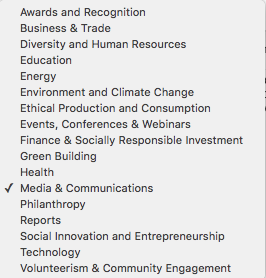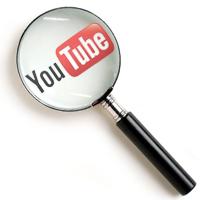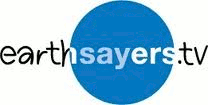Finding Our Sustainability Leadership
Tags, Taxonomies and Search
"Google has already implemented image recognition software (no surprise there) into its consumer-facing Google Photos. The platform takes a look at the photo collections of each user and sets out to organize them by categories. That’s novel in and of itself, but it gets better: Consider that these categories used to only be classifiable by tags submitted by users themselves—things like person, activity, subject, or place. Now, that’s done using AI." –Shelly Kramer Blogpost
Years ago when a group of us gave birth to EarthSayers.tv, Voices of Sustainability, an all video search engine, we took a close look at how content was being categorized by on-line publishers, particularly social sector ones. You are familiar with this process every time you fill out a form or make a selection from a menu. There are standard systems such as the industry taxonomy, Global Industry Classification Standards (GICS) developed in 1999 and well used by business-to-business marketers and then there is tagging which was introduced as part of Web 2.0.
What's a Tag?
Wikipedia tells us "In information systems, a tag is a non-hierarchical keyword or term assigned to a piece of information (such as an Internet bookmark, digital image, or computer file). This kind of metadata helps describe an item and allows it to be found again by browsing or searching. Tags are generally chosen informally and personally by the item's creator or by its viewer, depending on the system. Tags may be a "bottom-up" type of classification, compared to hierarchies, which are "top-down".
Sustainability Taxonomy
At the start, JoAnne O'Brien-Levin created for our team a sustainability taxonomy. We have been using it for these last seven years classifying nearly 2,000 videos. If you have multiple people adding to a collection and they are each assigning tags rather willy-nilly I don't think it is a stretch to say, that's crazy. It was hailed as a great break through but we didn't believe it then nor do we now.
Unlike Google using AI, we curate content and classify it using human intelligence (HI) guided by our taxonomy. We are now seeking funding for a project to do a blended taxonomy better integrating indigenous knowledge (rooted in a consciousness that connects humans to Mother Earth) into the very Western-developed sustainability landscape to produce a blended structured hierarchy that is also flat - one can move up, down and sideways learning from all traditions, both ancient and modern. We could use more support for this effort so if you are interested in partnering with us, please call us.
What's all this about?
We want our citizens to be able to discover the wide range of voices out on the Web that are speaking on behalf of Mother Earth and her Peoples. Being as close to the top of the Google search page as possible increases the visibility of her advocates. Our specialized search engine makes finding YouTube videos by our citizens easier and in the broad, rich context of sustainability - Planet, People, and Prosperity - rather than a general, all purpose video platform. Context is as important online as it has been in the print world of general and vertical publications.
For a commercial firm the purpose of search is simple; they want to rank higher in Google page rankings for their product where there is a lot of competition in the category and hundreds of keywords associated with that category. That's easy to understand. We've searched for products hundreds of times and often browse down the page - well, as a heat map (eye tracking study) of a Google search page shows - almost half way down the page!
Yet, it is equally important that citizens be able to navigate the sea of information out there about climate change (well met by my colleagues, Mark Trexler and Laura Kosloff in their service, The Climate Web) or our youth speaking out on what is happening to them and their communities due to climate change or, in finding experts addressing how we are to transform our economy or, hearing directly from our Indigenous Peoples, our WisdomKeepers.
Is it worth it to your cause or service? (yes)
A lack of attention to search among many of the social sector leadership is hard to understand. A measure of their inattention, despite knowing the problem of information overload, is the low viewing rates of videos that social organizations post to YouTube, the second most popular search engine after Google.
With the over-commercialization of the Web, those organizations with a cause and most certainly our local governments who are seeking to communicate with citizens would be wise to follow the lead of the folks selling commercial products and invest in creating and then using a taxonomy. For many in the social and public sectors our sustainability taxonomy can be used as a start, customized to a specific area of sustainability such as
planet>globalwarming>climatechange/climate change risk or people/culture&consciousness/consumerism and pulling together the search terms (hundred of them) under these categories likely to be used by individuals searching the web for knowledge, motivation, and inspiration.
Can we do it? (yes)
The terms people are searching on rather than the terms our experts, consultants might be using are available from Google Trends and Google Adwords.
Search and search engine optimization (SEO) requires an organized, well thought out strategy and then the creation of tools (like our search engine with its taxonomy) to focus on getting top page rankings on key terms that address the concerns and needs of our citizens. Or, you can try buying your way to the top using paid search. Notice bid prices in the attached adword chart. That's what the advertiser may pay per click (ppc). PPC is a way of buying visits to your site, rather than "earning" visits organically (organic search).
There is a ton of quality content out there, particularly video, that is lost in the sea of information. As an online publisher creating content and posting it online is only half the job. Making it floatable and findable is equally challenging.
Ruth Ann Barrett, DigitalSavvy blog, June 18, 2016, Portland, Oregon.







